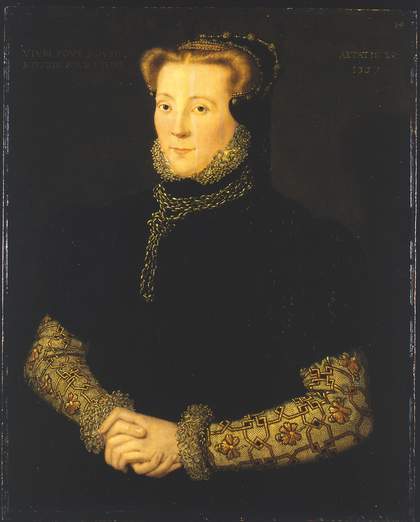
Fig.1
Hans Eworth active 1540–1573
Portrait of an Unknown Lady 1557
Tate
T00606
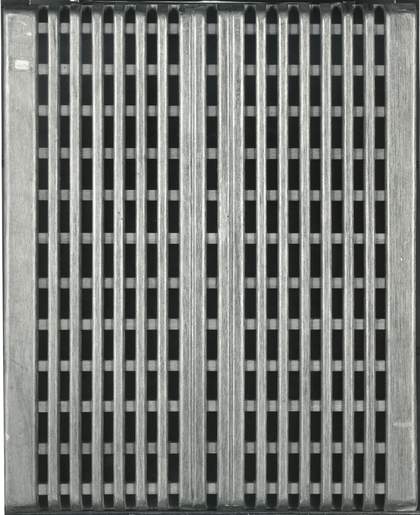
Fig.2
The reverse of Portrait of an Unknown Lady 1557
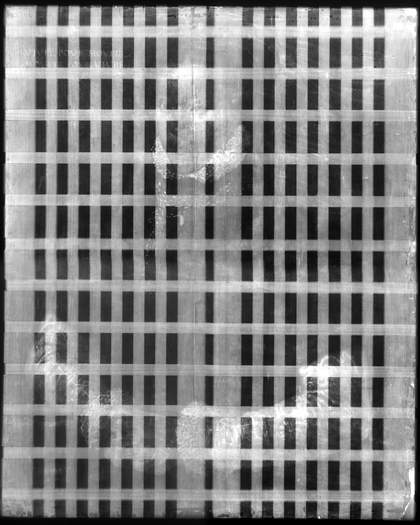
Fig.3
X-radiograph of Portrait of an Unknown Lady 1557
This painting is in oil paint on an oak panel measuring 600 x 482 mm (fig.1). The wood of the panel is not from the Baltic area, as would have been usual for this period; its grain is curved and the cut is tangential.1 At some time in the past, probably the nineteenth century, the panel developed splits and checks; the worst is a split from top to bottom down the middle through the sitter’s left eye. To remedy this weakness, the back of the panel was reinforced with a veneer of oak 1.5mm thick. This in turn was reinforced with a mahogany cradle, which can be seen in fig.2 and fig.3. This structural work predates the acquisition of the painting by Tate in 1963.
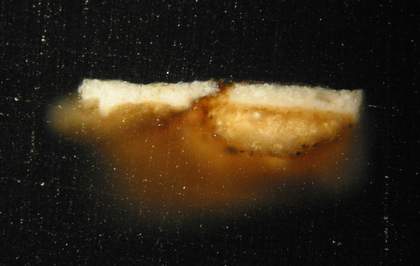
Fig.4
Cross-section through the black dress at the lower edge, photographed at x120 magnification. From the bottom upwards: white chalk and glue ground, which looks yellowish in the sample; very pale grey priming; thin black paint of dress
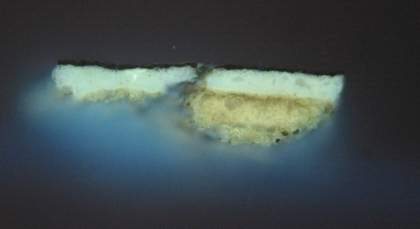
Fig.5
The same cross-section as in fig. 4, photographed at x120 magnification in ultraviolet light
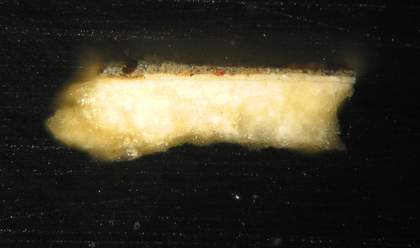
Fig.6
Cross-section through the highlit right side of the background at the top edge, photographed at x120 magnification. From the bottom upwards: white chalk and glue ground, which looks yellowish in the sample; very pale grey priming; possibly a very thin orange coloured layer; dark paint of the background
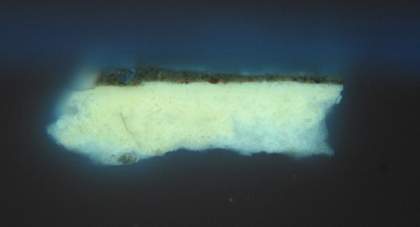
Fig.7
The same cross-section as in fig. 6, photographed at x120 magnification in ultraviolet light. The thin orange coloured layer visible in tungsten light is not visible in UV
The ground is a thick application of marine chalk (calcium carbonate) bound in animal glue (figs.4–7).2 It was covered over with a very pale grey, oil-based priming composed mainly of white lead and very small amounts of black. The application appears to be smooth.
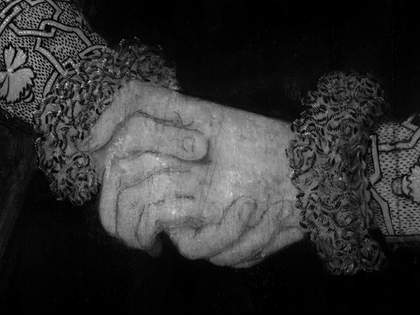
Fig.8
Infrared reflectogram of the hands of Portrait of an Unknown Lady 1557
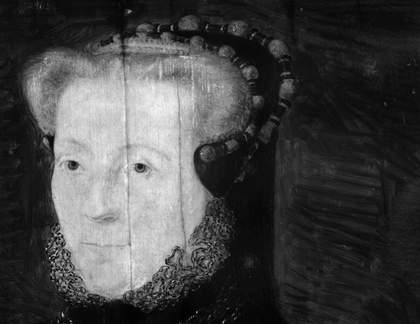
Fig.9
Infrared reflectogram of the head of Portrait of an Unknown Lady 1557
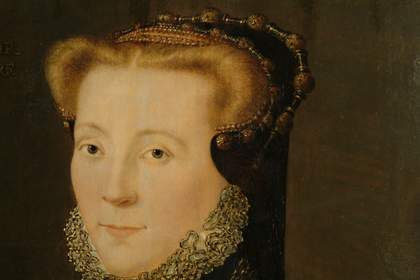
Fig.10
Detail of the sitter’s head and surrounding background
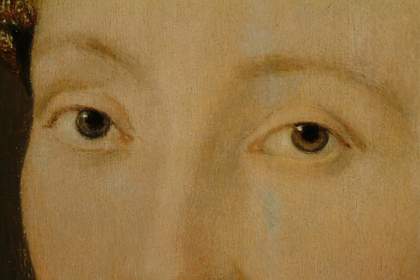
Fig.11
Detail of the sitter’s eyes
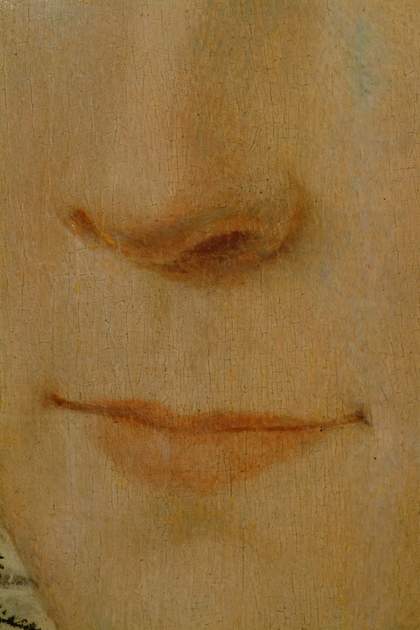
Fig.12
Detail of the sitter’s nose and mouth
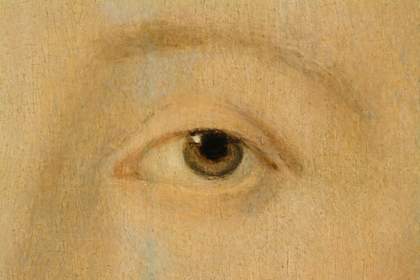
Fig.13
Detail of the sitter’s left eye

Fig.14
Detail of the sitter’s right eye
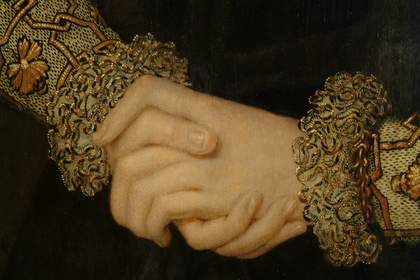
Fig.15
Detail of the hands. The underdrawing is just visible through the paint
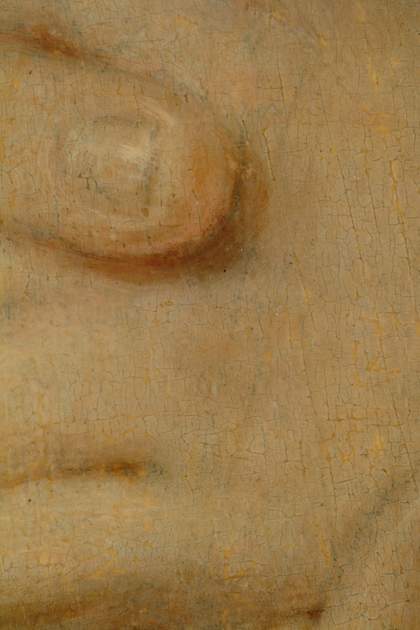
Fig.16
Detail of the thumb. The underdrawing is just visible through the paint
Infrared reflectography revealed linear underdrawing in the hands but not in the face (figs.8–16).
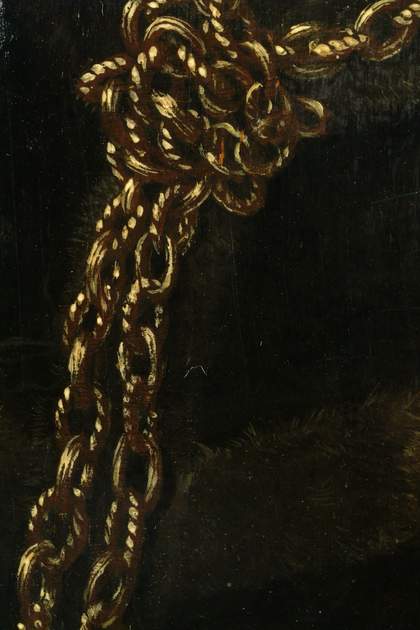
Fig.17
Close-up detail of the chain and old restorations in the black dress
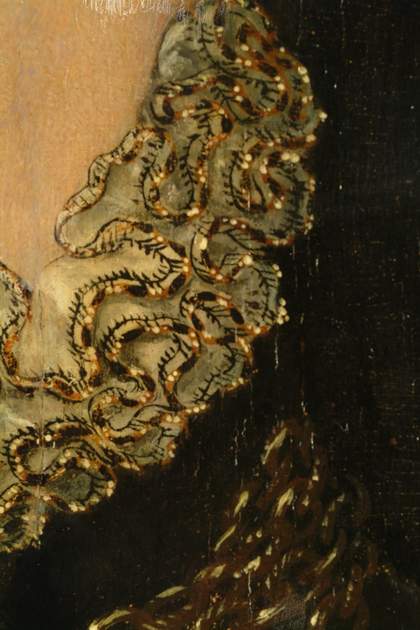
Fig.18
Close-up detail of the ruff
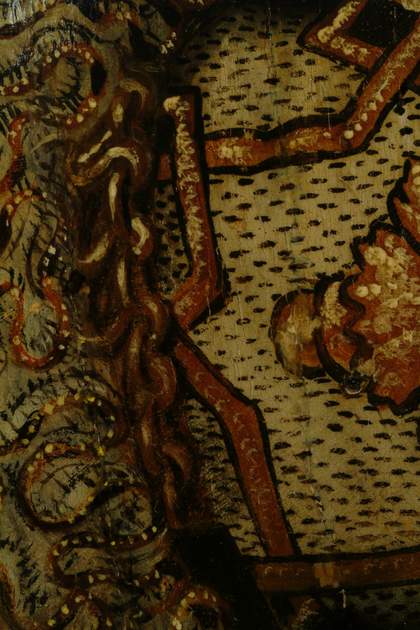
Fig.19
Close-up detail of the embroidery on the sleeve
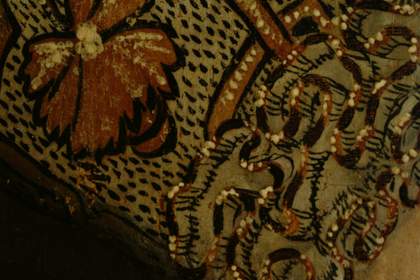
Fig.20
Enlarged detail of the embroidery on the sleeve
Although now somewhat obscured by old, yellowed varnish and old restoration to compensate for harsh cleaning in the past, the painting reveals that the original work was precise and delicate (figs.10–20). The black of the dress was mixed from bone black, Cologne earth, red lake and lead white.3 Its binding medium appears to be walnut oil or a mixture of linseed and poppy oils.4 The orange colour in the embroidery contains the following pigments: glassy particles, lead white, yellow/brown earth colours, traces of vermilion, Cologne earth, chalk and black.
The painting has a very old and thick varnish of natural resin.
January 2023
